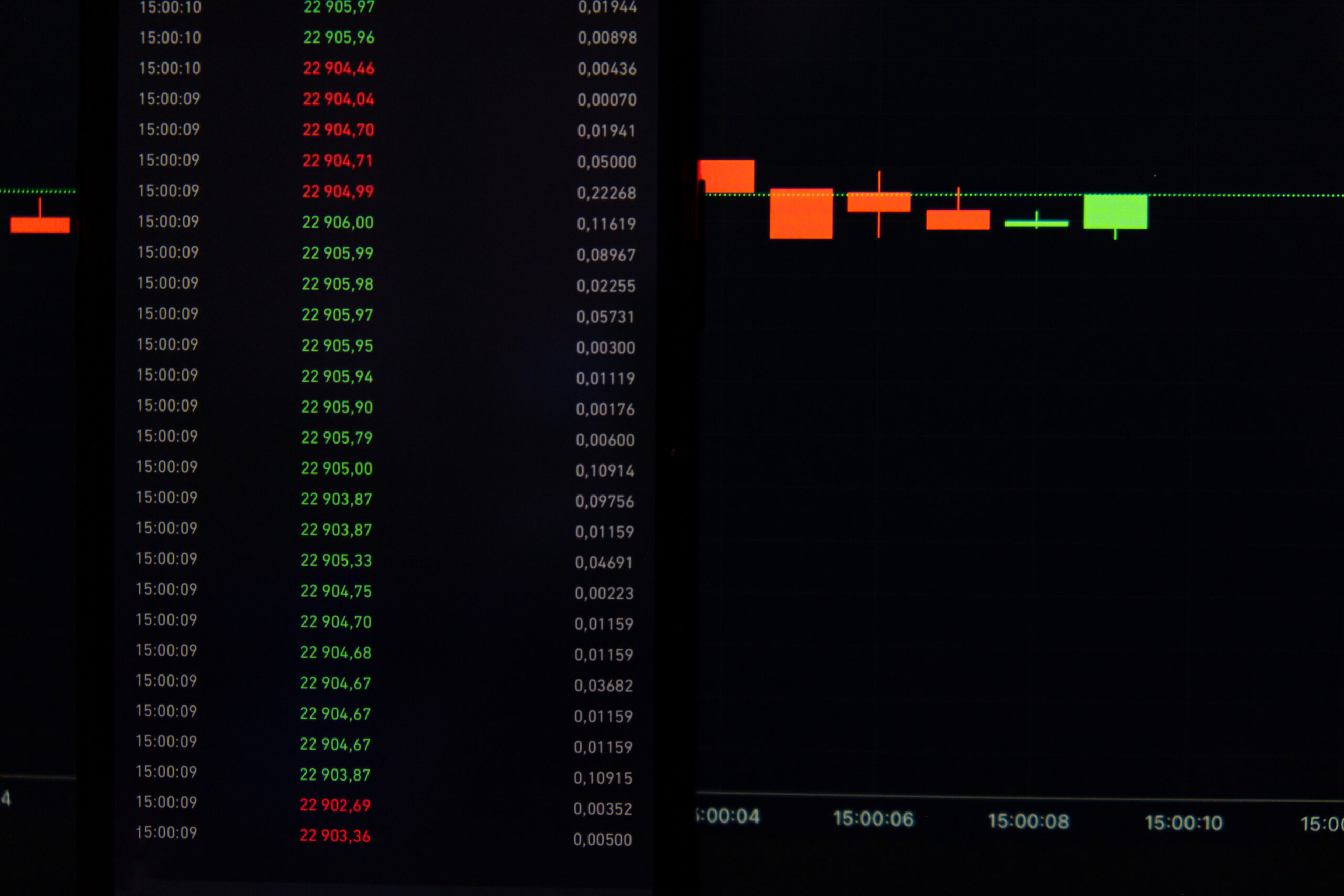
Table of Contents
ToggleIntroduction
In the world of finance, Japanese Candlestick Patterns have emerged as a quintessential tool for traders aiming to maximize their profits. Initially formulated by Japanese rice traders in the 17th century, these visual representations have evolved into a standard analytical method. The reason for their enduring appeal? They offer traders the ability to interpret market data effectively and make informed decisions.
Japanese Candlestick Patterns aren’t merely a relic from financial history; they’re a living, breathing method used by modern traders across various trading platforms. From the bustling floors of Wall Street to the digital interfaces of online trading apps, Japanese Candlestick Patterns have found a home. By visually representing the emotional undertones of the market, these patterns can help traders understand potential price movements in various financial markets, from forex to stocks and commodities.
While a myriad of tools and techniques are available to traders, Japanese Candlestick Patterns stand out due to their proven track record. These time-tested techniques in trading provide not just historical context but actionable insights, serving as a compass guiding traders through the labyrinth of market volatility.
So, if you’re keen on unraveling the mysteries of market behavior and predicting price movements with greater confidence, delve deeper into the intriguing world of Japanese Candlestick Patterns.

Source: Litefinance.org
The Origins of Japanese Candlestick Patterns
In the nuanced landscape of trading, Japanese Candlestick Patterns hold a significant place, tracing their roots back to 17th-century Japan. Initially, these were simple charts created by rice traders who needed a way to understand and predict price changes in the rice market. What they developed was not merely a trading tool but a sophisticated method of charting price actions that would endure for centuries.
Japanese Candlestick Patterns gradually found their way into broader commodity markets, including precious metals and other food grains. By the time trading evolved from regional markets to global exchanges, these patterns were primed for international adoption. Throughout the 18th and 19th centuries, traders around the world began recognizing the power of these charts, incorporating them into their trading arsenals and contributing to their refinement.
The durability of Japanese Candlestick Patterns isn’t an accident; it’s a testament to their inherent flexibility and adaptability. Different patterns emerged to showcase various market sentiments, including bullishness, bearishness, and market indecision. In essence, the durability of these forms serves as empirical evidence of their effectiveness in diverse market conditions. They are truly time-tested techniques in trading.
What sets Japanese Candlestick Patterns apart from other charting methods are their visual simplicity coupled with analytical depth. They are designed to be easy to read at a glance yet capable of providing layers of information that a line chart or bar chart cannot offer. The emotional undertones of the market are captured elegantly, providing traders an almost psychological insight into market conditions.
Fast forward to today, Japanese Candlestick Patterns have embraced the technological advancements of the modern world. Not only do they continue to be a crucial part of manual chart analyses, but they are also integrated into advanced algorithmic trading systems, proving that they can stand the test of time and technological progress.
Understanding Basic Candlestick Components
Before diving into the complexities of Japanese Candlestick Patterns, it’s crucial to understand the building blocks—individual candles. These aren’t your run-of-the-mill chart markers but are complex graphical representations with a rich set of data. Each candle you see on a chart embodies four essential components: the opening price, the closing price, the highest price, and the lowest price during a predetermined time period.
In the world of Japanese Candlestick Patterns, each candle serves as a miniature storyline that describes the battle between the bulls (buyers) and bears (sellers) during that time frame. While this may sound overly dramatic, it provides a highly accurate picture of market sentiment. The opening price tells you the initial price level at which trading started, while the closing price indicates where it settled. These two markers can convey a wealth of information about investor sentiment during that period.
But that’s just part of the story. The highest and lowest prices—often represented by the wicks or shadows protruding from the body of the candle—offer further insight into the trading activity. The highest price shows how far buyers were able to push the price up during the session, while the lowest price illustrates how much ground the sellers gained. In essence, these components encapsulate the market’s volatility and emotional extremities.
To fully comprehend Japanese Candlestick Patterns, one must become proficient in reading individual candles. They serve as the building blocks for more complex patterns, which consist of multiple candles. Whether you’re looking at a simple ‘Doji’ or a complex ‘Morning Star’ pattern, it all starts with understanding the anatomy of a single candle.
The color or shade of the candle’s body also adds another layer of complexity. Traditionally, a filled or dark body indicates a bearish candle where the closing price is lower than the opening price. In contrast, an empty or light body signifies a bullish candle where the closing price is higher than the opening price. Modern digital charts often use green for bullish candles and red for bearish candles for easier visualization.
How Do Japanese Candlestick Patterns Work?
When it comes to trading, technical analysis often feels like deciphering a foreign language, but Japanese Candlestick Patterns offer a more intuitive approach. They function as a visual language that encodes the psychological sentiments and collective behaviors of the market within specific time frames. But how exactly do these patterns work? Let’s dissect the mechanics.
Firstly, Japanese Candlestick Patterns are built upon a series of individual candles. As we’ve discussed in the previous section, each candle offers a snapshot of market activity within a specific timeframe. When these individual candles come together in certain configurations, they form distinct shapes known as patterns. It’s these patterns that traders scrutinize to predict future price movements.
The underlying philosophy is that human behavior, especially in a crowd, tends to be repetitive. By analyzing how the market has reacted in the past when certain candlestick patterns appeared, traders can make educated guesses on future market directions. Therefore, these patterns serve as a barometer of market sentiment, encapsulating both the rational and emotional factors driving buying and selling decisions.
For instance, a ‘Bullish Engulfing’ pattern, which consists of a small bearish candle followed by a much larger bullish candle, suggests a strong shift from a seller’s market to a buyer’s market. On the other hand, a ‘Bearish Harami,’ characterized by a large bullish candle followed by a smaller bearish candle within its body, could indicate a potential reversal in a rising market. In both cases, understanding the Japanese Candlestick Patterns can offer valuable insights into what might happen next in terms of price movement.
It’s not just about recognizing a pattern and making a trade, though. Experienced traders often combine Japanese Candlestick Patterns with other forms of technical analysis or trading indicators to validate their predictions. This multifaceted approach increases the chances of making accurate forecasts and minimizes risks.
Finally, it’s important to note that while Japanese Candlestick Patterns are extremely useful, they are not foolproof. Market conditions can change due to a variety of factors, from economic announcements to geopolitical events. Therefore, they should be used as part of a diversified trading strategy, rather than a standalone decision-making tool.
Predicting Price Movements through Bullish and Bearish Patterns
Predicting price movements is the Holy Grail of trading, and many tools and techniques have been developed to achieve this goal. Among them, Japanese Candlestick Patterns have emerged as one of the most reliable and time-tested techniques in trading. By offering a rich palette of bullish and bearish formations, these patterns serve as a roadmap for traders seeking to navigate the labyrinthine paths of the financial markets. But how do these patterns enable accurate predictions? Let’s explore this through the lens of Candlestick Chart Analysis.
Bullish Patterns
In a market trending upwards, or what is commonly referred to as a “bull market,” certain Japanese Candlestick Patterns frequently appear. Some of the most common bullish patterns include the Bullish Engulfing, Morning Star, and Hammer. These formations generally indicate a high likelihood that the market will continue to rise.
Bullish Engulfing: This pattern is marked by a small bearish candle followed by a larger bullish candle that “engulfs” the previous one. It usually occurs after a downtrend and signals a reversal, shifting the momentum towards the buyers.
Morning Star: This is a three-candle pattern featuring a large bearish candle, a small-bodied candle, and a large bullish candle. It indicates a potential reversal from a bearish trend to a bullish trend.
Hammer: Resembling a hammer with a small body and a long lower wick, this pattern occurs after a downtrend. It suggests that the market is attempting to find a bottom and may soon reverse to an upward trend.
Bearish Patterns
Conversely, in a declining or “bear” market, you’re likely to encounter bearish patterns like the Bearish Engulfing, Evening Star, and Shooting Star. These patterns suggest that the market is more likely to continue its downward trajectory.
Bearish Engulfing: The opposite of a Bullish Engulfing pattern, a Bearish Engulfing features a small bullish candle followed by a larger bearish candle that engulfs the previous one, signaling a potential turn in market sentiment towards the sellers.
Evening Star: This pattern is essentially the reverse of the Morning Star and is indicative of a potential shift from a bullish trend to a bearish trend.
Shooting Star: Similar to a hammer but appearing after an uptrend, the Shooting Star features a small body with a long upper wick. It indicates that the buyers tried to push the market higher but failed, signaling a potential reversal to a downward trend.
By mastering the art of identifying these bullish and bearish patterns, traders can employ Candlestick Chart Analysis as a powerful tool for predicting price movements. It’s not just about reading the patterns; it’s about understanding the market psychology encapsulated within each candle and pattern, allowing traders to make informed decisions based on time-tested techniques in trading.
Read more about Basic Candlestick Charts…
Time-Tested Techniques in Trading: A Deep Dive
The financial markets are a volatile landscape, subject to rapid changes influenced by a plethora of factors ranging from economic indicators to global events. Amid this uncertainty, Japanese Candlestick Patterns stand as beacons of reliability. The key to their enduring utility lies in their origins: developed centuries ago by rice traders, these patterns have adapted and evolved, but their core principles have stood the test of time, proving their worth across various asset classes, from commodities to the forex and stock market.
One of the major strengths of using Japanese Candlestick Patterns is their compatibility with other elements of technical analysis. While these patterns offer a comprehensive snapshot of market sentiment, they become even more potent when combined with other trading indicators such as moving averages, Bollinger Bands, or the Relative Strength Index (RSI). This multifaceted approach to trading allows for a more nuanced understanding of market conditions, thereby reducing risk and increasing the likelihood of making profitable trades.
In an environment that’s as dynamic and ever-changing as the financial markets, the enduring relevance of these patterns is testament to their efficacy. When employed correctly, they serve not just as standalone predictive tools, but as crucial components in a diversified trading strategy, seamlessly integrating with other tools and indicators.
Practical Applications in Forex and Stock Market
Japanese Candlestick Patterns are not confined to a single type of financial market; their versatility makes them applicable across multiple trading environments, particularly in the forex and stock market. This adaptability adds a significant layer of utility to your trading strategy, regardless of the asset you choose to trade.
Forex Market
In the forex market, currency pairs are traded in an environment characterized by high liquidity and 24-hour trading cycles. This often results in volatile price movements that can occur within very short time frames. Japanese Candlestick Patterns prove to be an indispensable tool in such a dynamic setting. For example, a ‘Doji’ pattern, which signifies indecision in the market, can be a crucial indicator for traders to either enter or exit trades, depending on other technical indicators and the prevailing market trend.
Stock Market
The stock market, on the other hand, tends to operate on longer time frames and is influenced by a different set of economic factors, such as company earnings and macroeconomic indicators. Here, Japanese Candlestick Patterns like the ‘Bullish Engulfing’ or ‘Bearish Harami’ can give traders insights into potential reversals or continuations in stock price trends. These patterns can be particularly useful during earnings season, where stock prices are prone to sudden spikes or drops.
Coupling with Other Indicators
One of the most effective ways to utilize Japanese Candlestick Patterns is to combine them with other trading indicators. In the forex market, they can be used in tandem with indicators like Moving Averages or the Fibonacci Retracement levels for more precise entry and exit points. In the stock market, combining these patterns with indicators like the RSI or MACD can offer a more rounded view of the market conditions.
By understanding the nuances of Japanese Candlestick Patterns and their applicability in different markets, traders can craft well-rounded trading strategies that are both versatile and robust. This adaptability makes them invaluable tools for both novice and experienced traders navigating the volatile landscapes of the forex and stock market.
Conclusion
The universality of these patterns extends beyond geographical and temporal boundaries. They are as relevant in the highly liquid and fast-paced environment of the forex market as they are in the more methodical and research-oriented stock market. Moreover, their adaptability makes them perfect for integration with other forms of technical analysis, be it moving averages, Bollinger Bands, or various trading indicators. This multi-tool capability allows traders to develop robust, comprehensive trading strategies, reducing risk while increasing the potential for profitable trades.
In a field as volatile and complex as financial trading, the simplicity and efficiency of Japanese Candlestick Patterns offer a sense of stability and reliability. They demystify complex price movements, providing a straightforward yet comprehensive way to interpret market data. From novices who are just starting their trading journey to seasoned professionals looking for a reliable method of predicting price movements, these time-tested techniques in trading provide invaluable insights that can make the difference between a profitable trade and a missed opportunity.
The staying power of Japanese Candlestick Patterns lies in their simplicity, adaptability, and unerring accuracy. For traders looking to navigate the ever-changing waves of the financial markets, these patterns serve as both a compass and a map, guiding the way towards informed and profitable trading decisions.
Explore more blogs on Forex Trading on our website….
FAQs
Can Japanese Candlestick Patterns be used for all types of markets? Absolutely, these patterns have found applications not just in forex and stock market but also in commodities and indices.
How reliable are these patterns in predicting price movements? While Japanese Candlestick Patterns offer robust ways of predicting price movements, they are best used in conjunction with other methods of technical analysis for best results.
What are the common trading indicators used with candlestick patterns? Traders often use trading indicators like moving averages, Bollinger Bands, and RSI alongside candlestick patterns to improve the accuracy of their predictions.
Are Japanese Candlestick Patterns suitable for day traders? Yes, these patterns can be applied in various time frames, making them versatile tools for both day traders and long-term investors.
Can I use these patterns in both bullish and bearish markets? Yes, you can identify both bullish and bearish reversal patterns, making them applicable in various market conditions.

